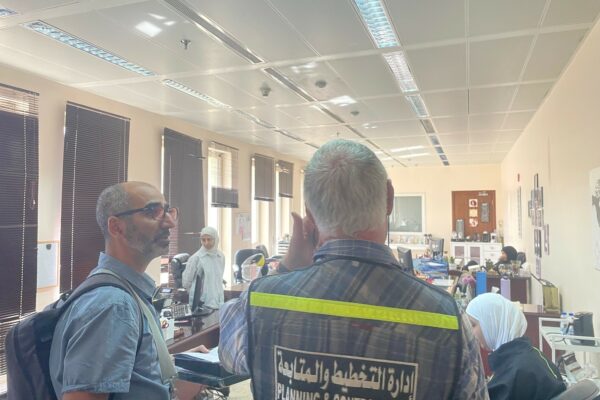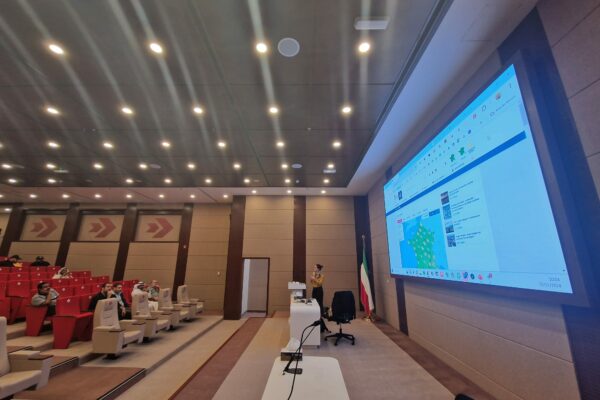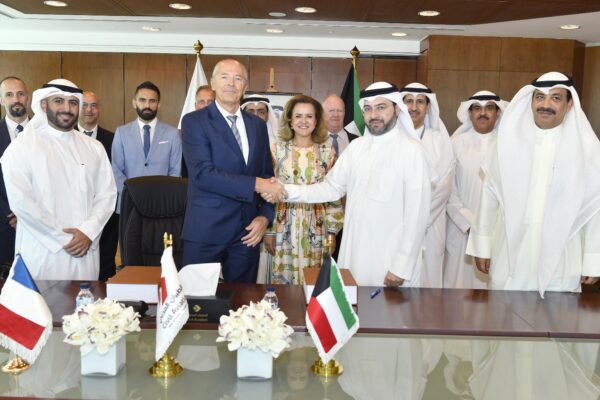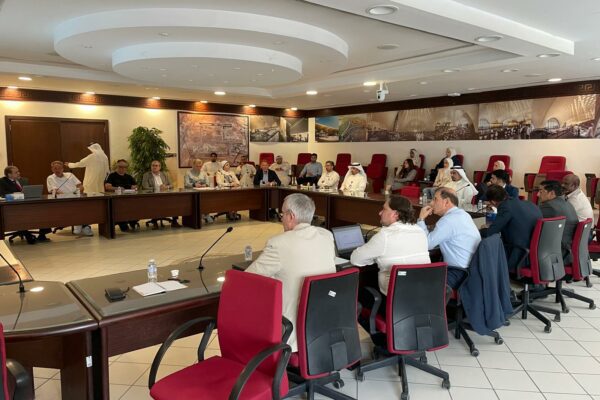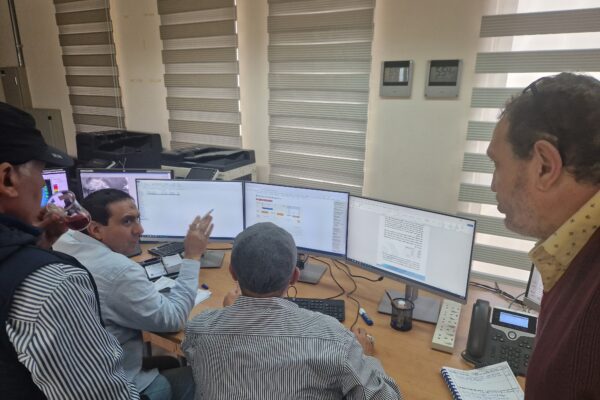Koweït – Projet M2P2G
Project Overview
Following an international call for tenders, MFI won a contract in June 2024 to carry out an ambitious project to strengthen the Meteorological Department (KMD) of the Directorate General of Civil Aviation (DGCA) of Kuwait. The MDP2G Project (Meteorological Data Processing System Second Generation) is part of a larger initiative for the complete modernization of Kuwait City’s international airport complex.
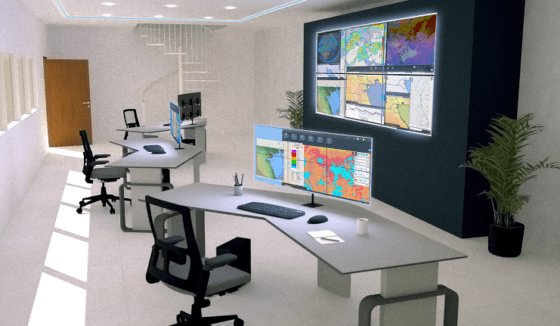
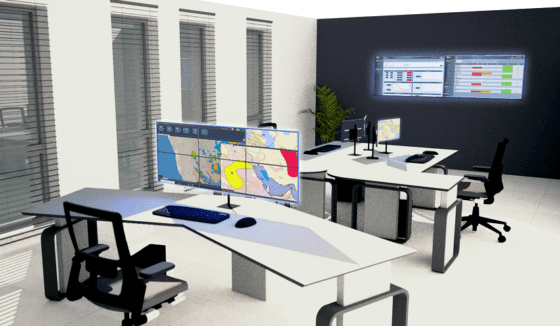
CONTENT OF THE PROJECT
The MDP2G Project includes the implementation of a complete and integrated information system, from the collection and management of large volumes of data to the dissemination of warnings and met information to the general public, and major weather-sensitive economic sectors (aviation, oil & gas industry, etc.). Special emphasis is also put on the implementation of advanced technological solutions in the areas of early warning and modeling, particularly sandstorms, a major local problem.
True to its global and turnkey approach, MFI also provides an ambitious capacity building program for DGCA teams. More than 130 weeks of training are included in the project to ensure its effectiveness and sustainability. With the same concern for durability, the DGCA made the smart choice to plan a 4-year technical support period at the end of the two and half years of completion of the contract.
INFRASTRUCTURE
- Rehabilitation of existing spaces (2 server rooms, forecasting room, press room, etc.)
- Turnkey construction of a site office, on the airport premises
INFORMATION SYSTEMS
- Satellite reception system.
- AMSS - Automatic Message Switching System.
- CIPS - Data & Task Center.
- CLISYS - Climate Data Management System.
- SYNERGIE-WEB - Forecasting system.
- AEROMET-WEB - Pilot briefing system.
- METEOFACTORY - PWS/EWS production system.
- EXTRAMET - Extranet generator
- VISUMET-WEB - Public display system.
- MET-MONITOR - Supervision system.
- WIGOS-MET - Metadata management system.
SUPPORT SERVICES
- Project Design Study.
- System integration.
- Project management (including Steering Committees every 6 months).
- Capacity building >> 126 weeks / 49 sessions
- Assistance to Operational Start.
- Data flow & modelling (Eumetsat, Sadis, ECMWF, NCEP, BSC Dust storm & seasonal forecast, Copernicus, Aeronet, Météo-France RDT & Arpège)
- Technical support (4 years after last Site Acceptance Tests).
Project outcomes
For DGCA / Kuwait Met Department
In terms of human resources: the objective is to take KMD’s staff to a higher level of skill through a comprehensive capacity building program, co-animated with experts from Météo-France and including system-oriented trainings as well as more specialized modules in the fields of forecasting, modelling, climatology, aviation meteorology, etc. A special attention will also be paid on staffing and recruitment with the objective to put the Kuwaiti people back at the center of KMD’s organization.
In terms of organization: thanks to MFI’s global approach that goes beyond technical issues, the whole organization and operational processes of KMD will be reviewed for optimized efficiency. A special effort will be put on automation to focus human expertise on value-added activities. MFI will support the KMD in a real process of change management.
In terms of IT systems & equipment: MFI’s offer consists in the supply and implementation of a complete information system based on the latest technologies, and fully compliant with all WMO, ICAO and other international standards. High availability, user-friendly interfaces, easy maintenance, great scalability and reinforced security will be the main characteristics of the global integrated Information System MFI proposes to implement at KMD.
In terms of service capacity: with the MDP2G Project, the KMD is going to significantly improve its service capacity towards end-users, general public and economic sectors. MFI has already assisted numerous NHMSs developing their Public Weather Services (PWS) offer and will provide the necessary technical solutions, as well as the necessary know-how for KMD to meet the specific needs of its end-users, especially those of crucial Kuwaiti economic sectors (aviation, energy, marine, etc.)
In terms of image: with the MDP2G Project, the KMD is going to become a reference meteorological center in the Middle East region. With improved forecasting / modelling / warning capacities, with better climate monitoring and a wider PWS offer, KMD’s influence will grow. MFI’s project includes the renovation of KMD premises: a brand-new forecasting room, state-of-the-art data center, etc. will contribute to KMD’s renewed and high-tech image.
For Kuwaït
In terms of protection of people & support to the economy: Kuwaiti people will be the first to benefit from the MDP2G Project. Thanks to better forecasting and warning provided by KMD, Kuwaiti authorities are going to be able to ensure better protection of its population in case of severe weather events, including sandstorms. Kuwaiti economy will also benefit from KMD’s increased service capacity through better management of weather-sensitive activities.
In terms of air navigation safety: the MDP2G Project, by improving KMD’s aeronautic assistance capabilities, will allow Kuwait to ensure better air safety in its international area of responsibility.
In terms of international influence: at the end of the MDP2G Project, Kuwait will be able to take its rightful place on the international meteorological scene by contributing actively to all WMO global programs such as WIGOS (Integrated Global Observing System), GFCS (Global Framework for Climate Services), or GMAS (Global Multi-Alert Warning System).
In terms of climate monitoring: while climate change is a growing concern of our modern societies, Kuwait is going to be able to engage more efficiently on the path of better adaptation to its drastic effects thanks to the better monitoring provided by KMD.
Project in pictures
